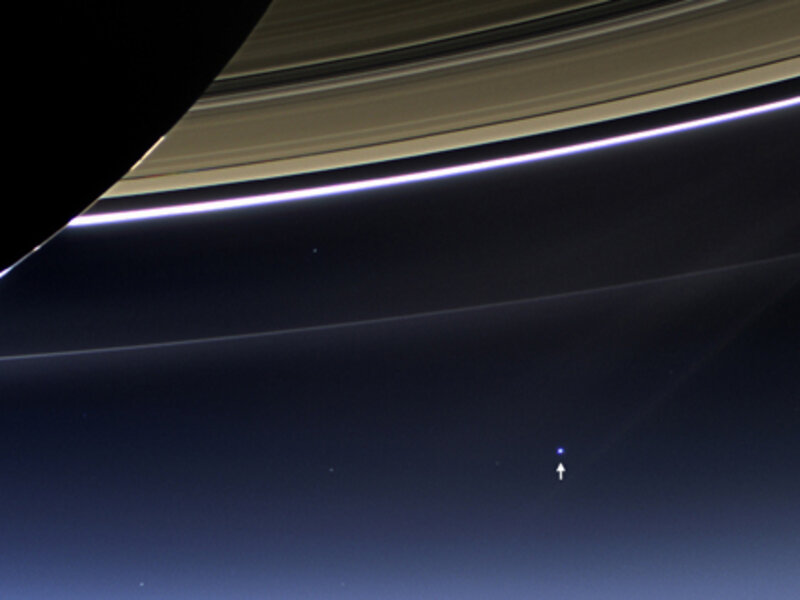Cassini Saturn photo: A view of Earth from 900 million miles away
Loading...
Earth, home to some seven billion people and at least some 9 million species, looks lonely. Or at least, it does seen at a distance of some 900 million miles.
NASA has released color and black-and-white images taken from its Cassini and MESSENGER probes orbiting Saturn and Mercury. Those images show Earth as just a dot, lost in the solar system’s gaping emptiness.
In the photographs from the Cassini spacecraft, Earth is seen from about 900 million miles afield, a bright blue dot just under Saturn’s mammoth yellow-brown rings. The moon appears like a small star, a humble white stipple in the surrounding darkness.
And in the MESSENGER photos, Earth is pictured in a black-and-white image at a distance of about 61 million miles, from Mercury’s orbit. In that photo, Earth looks like a sparkling star – a bulb of white light quietly announcing itself from space. Together, the Earth and the moon are less than a pixel in the photograph, but have been overexposed to bloom with light.
The Cassini photo, taken in mid-June, marked the first time that Earthlings were told in advance that a picture was going to be taken, ending a rude tradition of snapping candid shots of Earth. NASA scientists had asked us to turn out for picture day – not that anyone really had a choice – venturing out in streets and front laws with a smile and a wave for the far-flung camera.
Pictures of Earth from space are difficult to take, since scientists must wait to take the shot until a roster of factors align. For the Cassini probe to snap Earth, Saturn had to completely eclipse the sun, blocking out unwanted sunlight that could ruin Cassini's sensitive detectors. The photo also had to be taken when the orbits of Saturn, the Earth, and Cassini lined up perfectly to make dot-like Earth visible.
Still, those rare pictures of a small planet have loomed large in global consciousness. In 1990, Voyager 1 took from out past Neptune the "Pale Blue Dot" image of Earth. That image is considered the first space image to communicate the haplessness of Earth when viewed with some – or a lot – of perspective. There, all the planet’s continents and oceans and borders receded into blue. All its dramas and stories and memories faded into a dot. All its people disappeared.
And yet, all those invisible people had managed to send an object out to the furthest reaches of our solar system – and how to take a photograph with it.
In several weeks, NASA will release a mosaic photo of Saturn's rings that is taking time to assemble.








